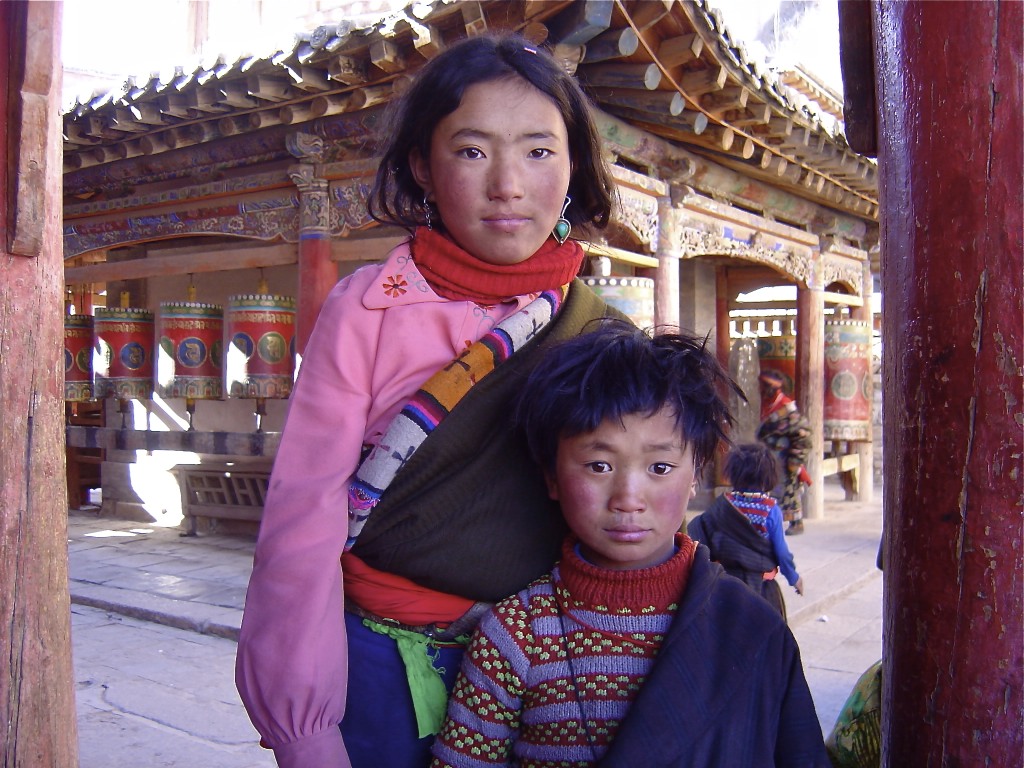
The Qinghai part of Amdo covers a huge area roughly twice the size of Colorado or 1.5 times the size of Germany. There are 5 Tibetan Autonomous Prefectures within Qinghai that are Amdo speaking and one other prefecture with a large Amdo Tibetan population. Approximately 60% of the Amdo speaking Tibetans in China live within Qinghai. The remaining 40% live in Gansu and Sichuan. Altogether, there are approximately 900,000 Amdo Tibetans in Qinghai. The Amdo Tibetan autonomous prefectures in Qinghai are:
1. Guoluo / Golog མགོ་ལོག་
2. Huangnan / Malho རྨ་ལྷོ་
3. Hainan / Tsolho མཚོ་ལྷོ་
4. Haibei / Tsochang མཚོ་བྱང་
5. Haixi / Tsonub མཚོ་ནུབ་
6. Haidong* / Tsoshar མཚོ་ཤར་
7. Xining City** / Siling ཟི་ལིང་
* Haidong is not a Tibetan Autonomous Prefecture, but is home to over 135,000 Amdo Tibetans. The current 14th Dalai Lama as well as the late 10th Panchen Lama are both from this prefecture.
**Xining City is not in a Tibetan Autonomous Prefecture. There are approximately 120,000 Tibetans in Xining, which is just over 5% of the total Xining City population. Xining City covers the Xining city limits as well as the 3 surrounding counties of Datong, Huangzhong and Huangyuan.
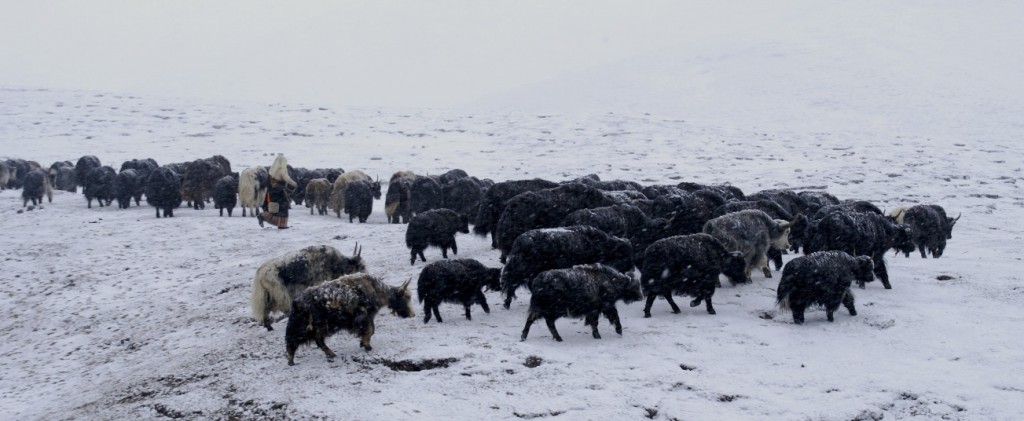
Nomad woman from Tsolho prefecture herding yaks in the snow
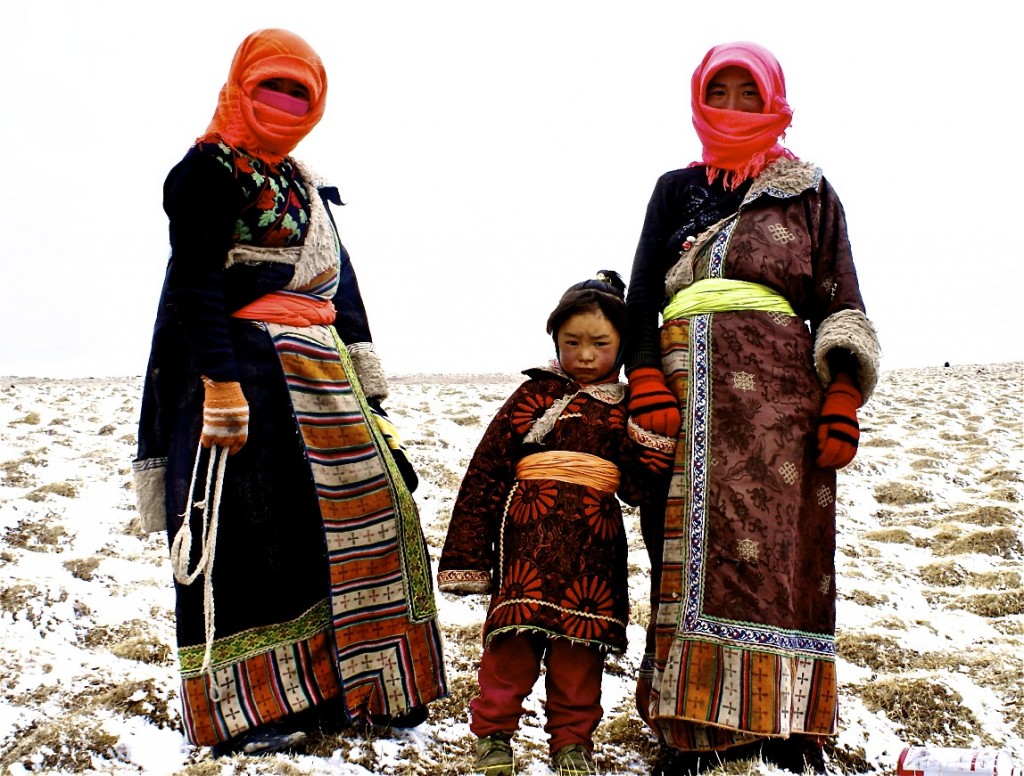
Amdo nomads from Hainan / Tsolho prefecture
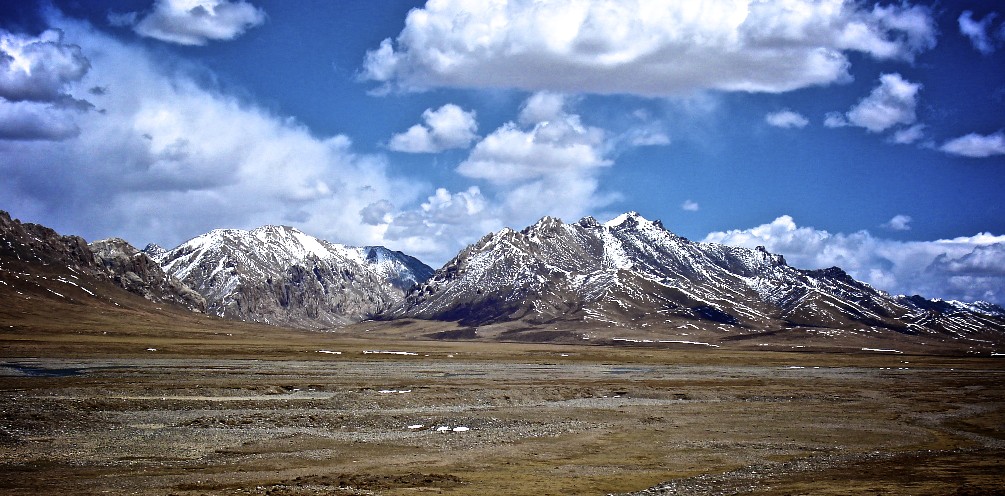
Snow-capped peaks in western Golog prefecture
The Qinghai part of Amdo is a great place to go for those interested in traditional nomadic Tibetan culture. Yak and sheep herding remain a vital part of most Tibetans lives in this area. Tibetan nomads can be found throughout Golog and Hainan/Tsolho prefectures as well as in parts of Huangnan/Malho and Haibei/Tsochang prefectures. These regions consist mostly of high altitude grasslands lying between 3300 and 4000 meters above sea level. Though many nomads in Qinghai have been relocated or are in the process of being relocated, it is still possible to find nomads during the summer and fall seasons living in traditional yak wool tents. Others herd their flocks while living in small mud-brick or concrete homes.
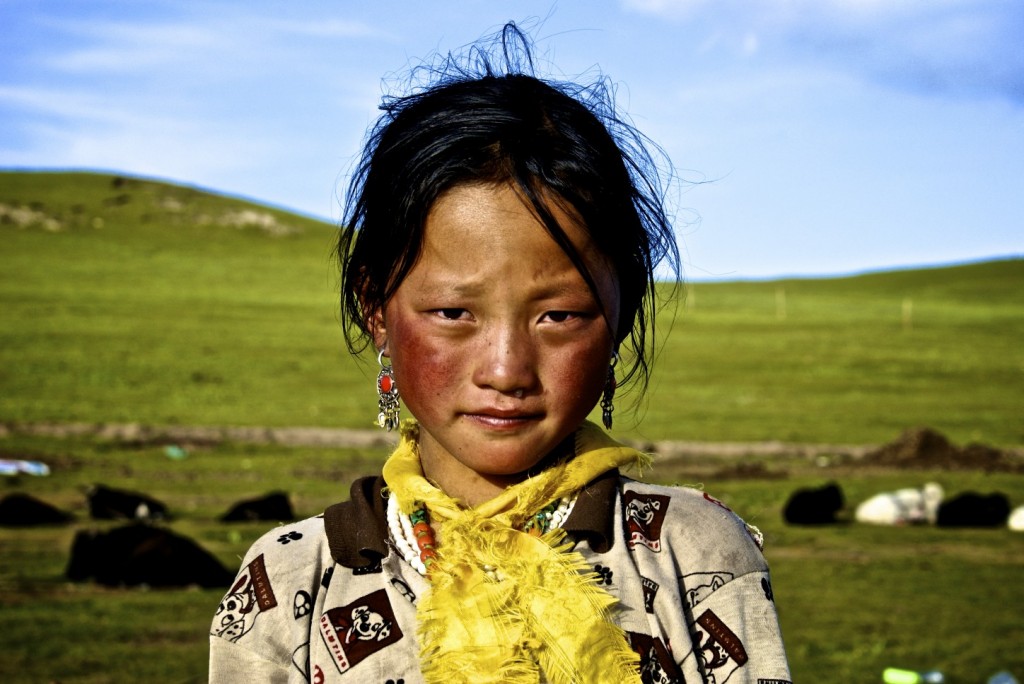
Young nomad girl from Zeku / Tsekog county རྩེ་ཁོག་
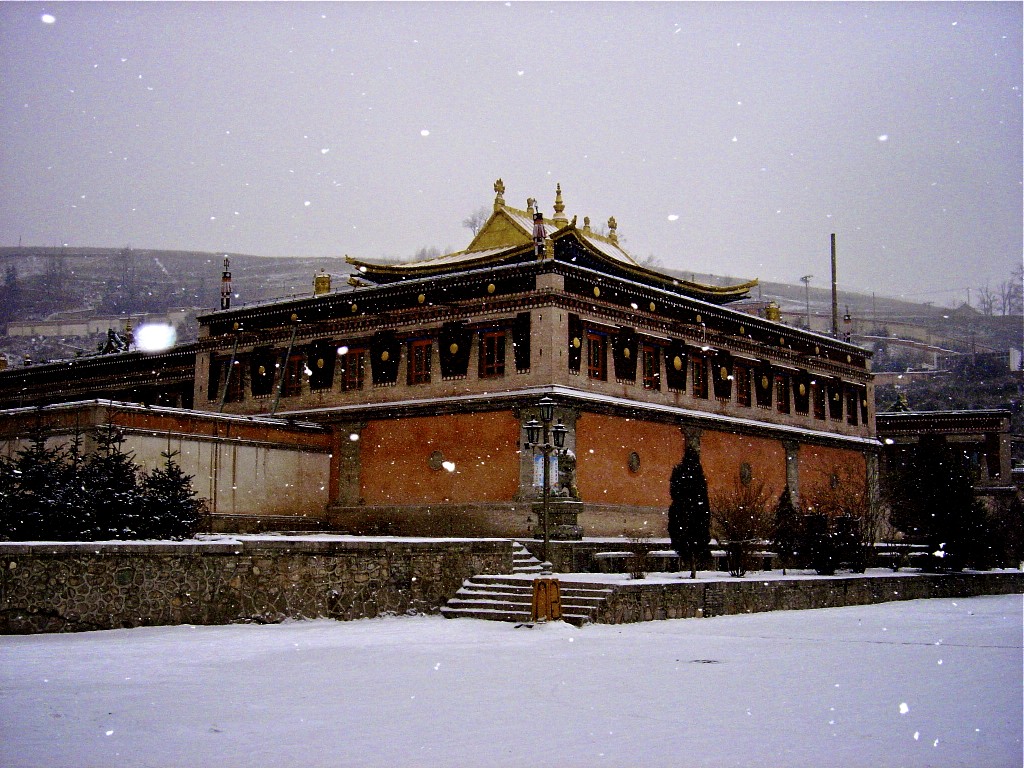
Kumbum Monastery སྐུ་འབུམ་ near Xining
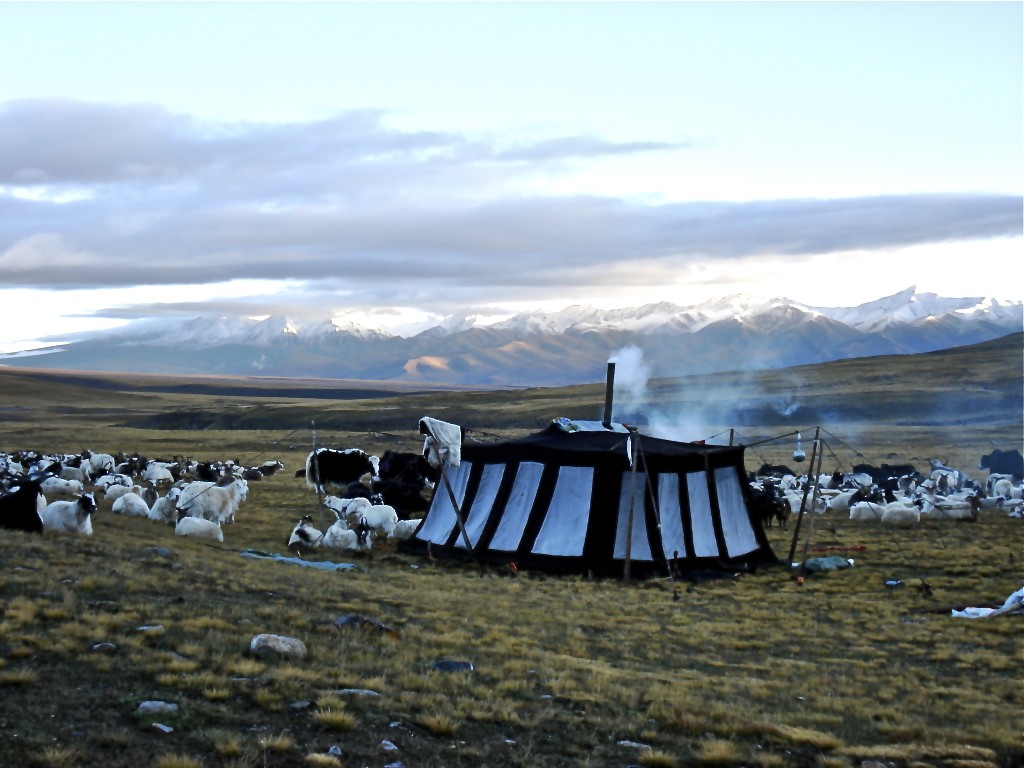
Nomad tent in Xinghai / Tsigortang county རྩི་གོར་ཐང་ in Tsolho prefecture
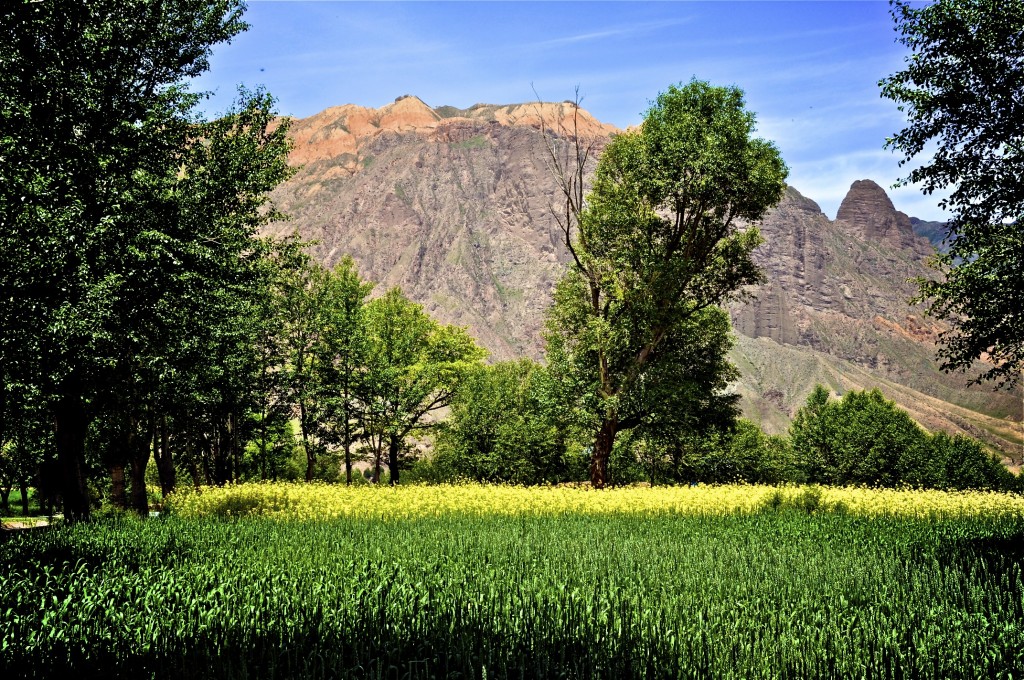
Farming area near Tongren/Rebkong རེབ་གོང་ in Malho prefecture
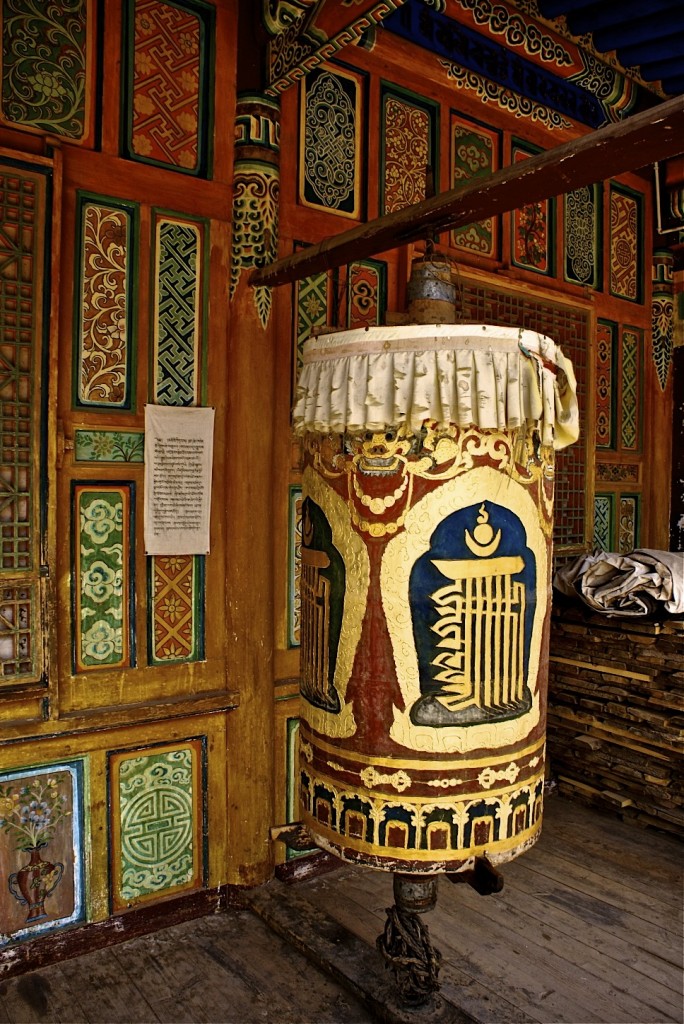
Old prayer wheel in Jianzha/Jiantsa county ཅན་ཚ་
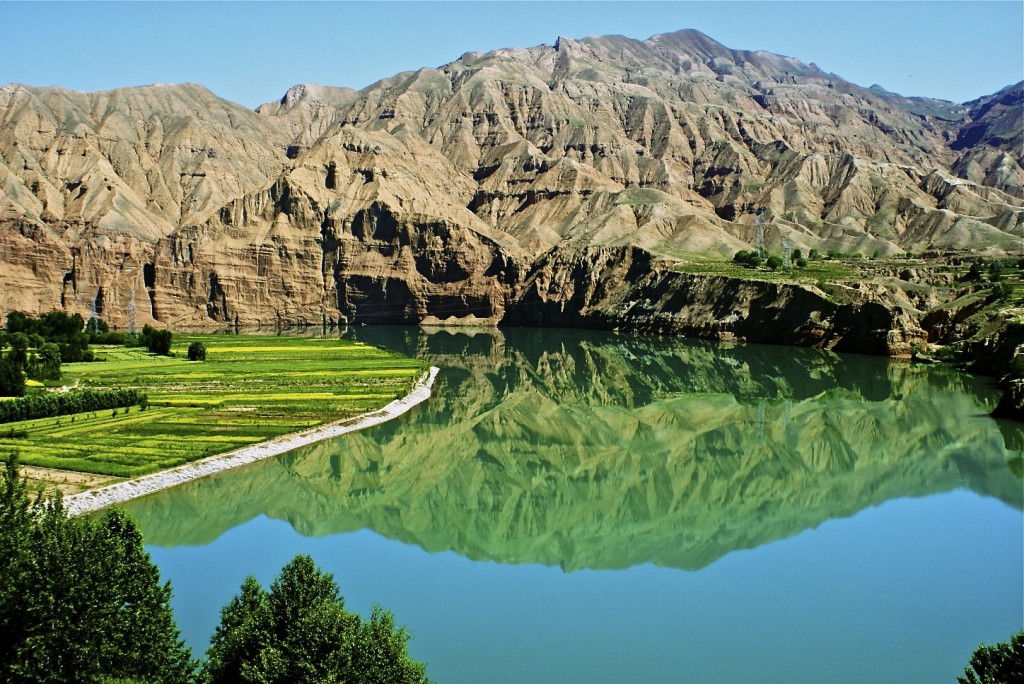
The Yellow River viewed from the Kanbula National Park in Jianzha/Jiantsa county ཅན་ཚ་
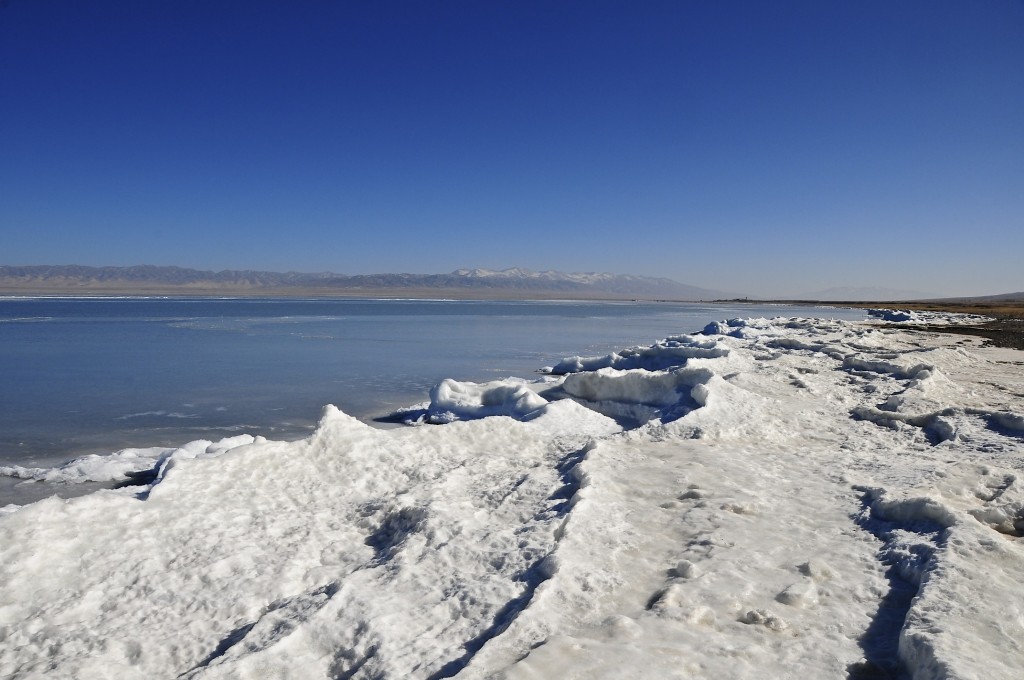
Qinghai Lake མཚོ་སྔོན་པོ་ frozen in the winter
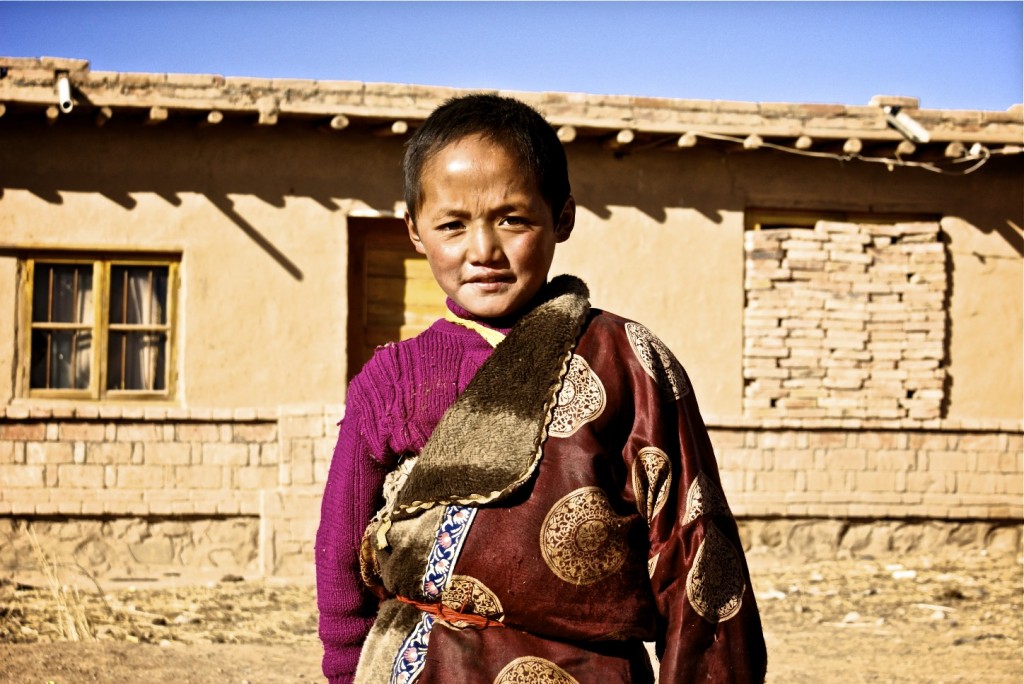
Young nomad boy from Gonghe/Chabcha county ཆབ་ཆ་, near Qinghai Lake
While much of Amdo consists of rolling high altitude grasslands, there are numerous snow-capped peaks as well. Most of the highest mountains are found in Golog prefecture, the highest prefecture in Amdo. The highest peak in all of Amdo is found in Qinghai. Mt. Amnye Machen ཨ་མྱིས་རྨ་ཆེན་ rises to 6280 meters and is found in Golog prefecture. This glaciated peak is one of the 4 main mountains that are considered to be holy amongst Tibetan people. The other 3 mountains are Kailash in western Tibet, Minya Konka in the Sichuan part of Kham and Kawa Karpo in the Yunnan part of Kham. Each year, thousands of pilgrims walk the pilgrimage route around Amnye Machen. The route along Amnye Machen has become increasingly popular for foreign trekkers who take 5 to 8 days to trek around the mountain.
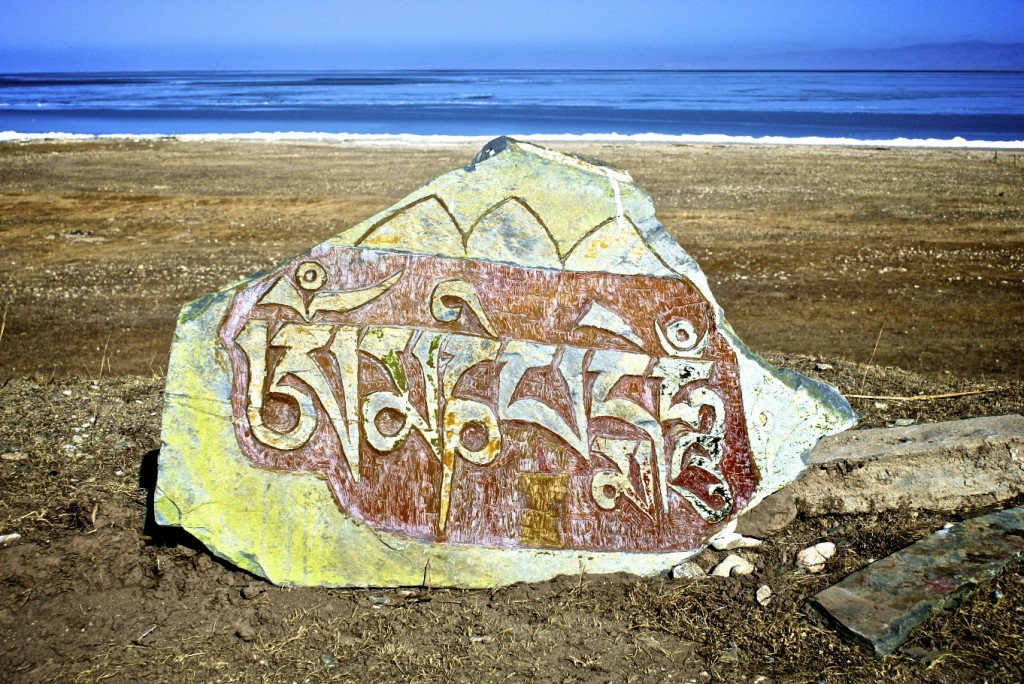
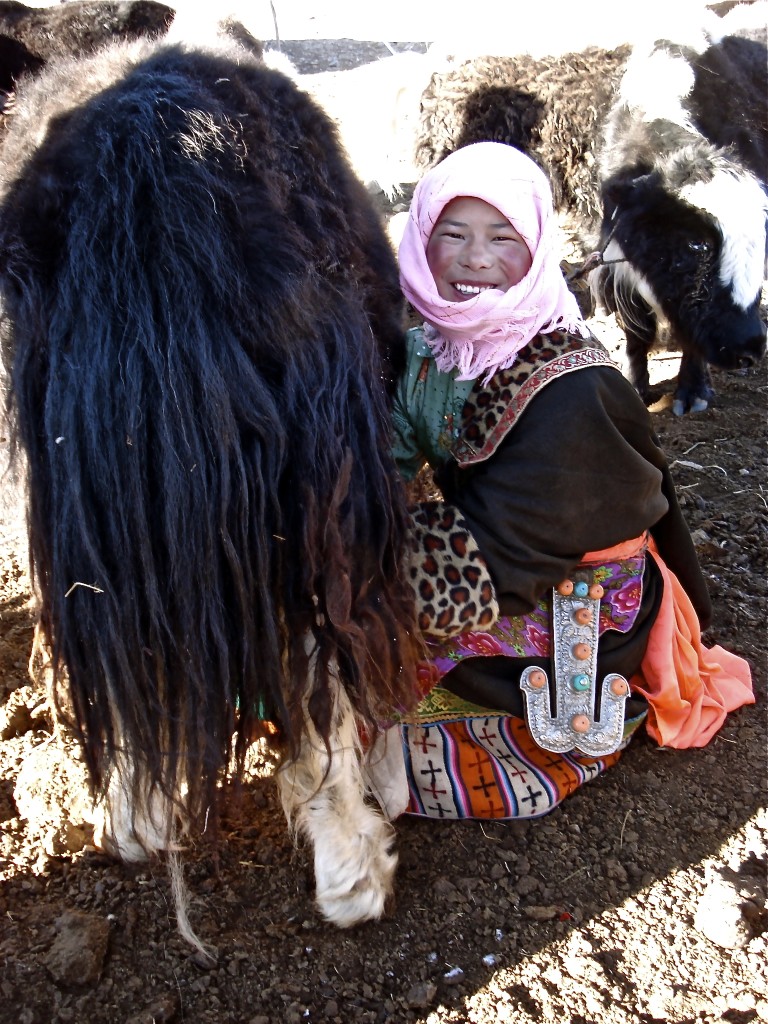
Nomad girl near Qinghai Lake getting fresh milk
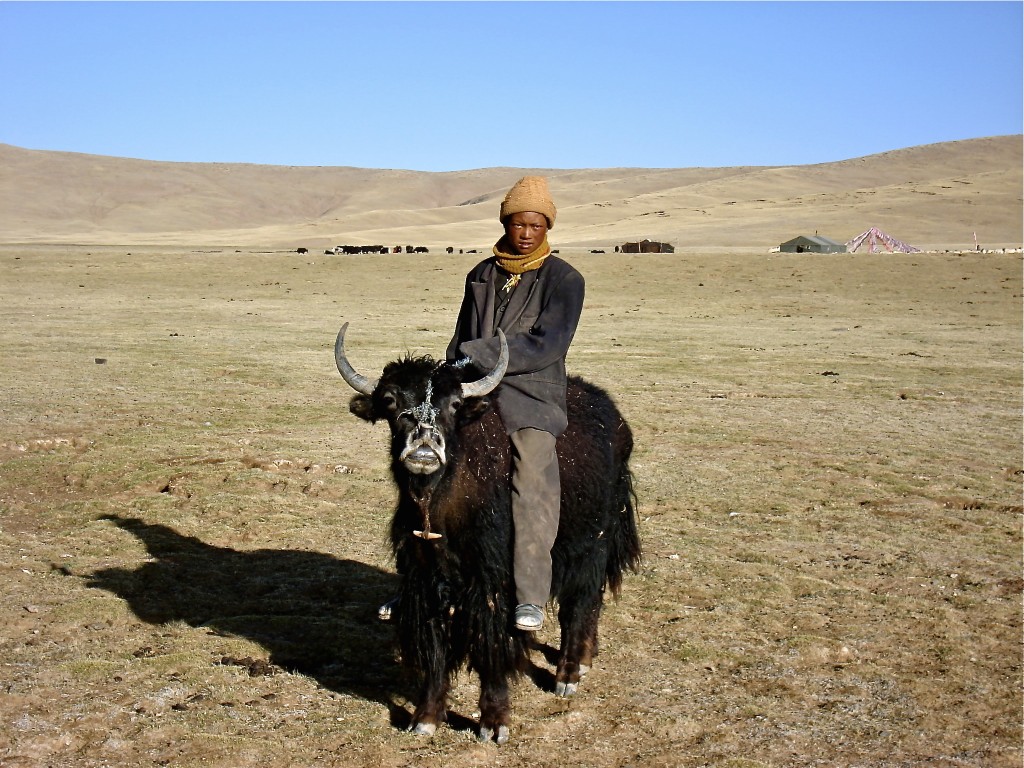
Nomad boy riding a yak in Maduo/Madoi county རྨ་སྟོད་ in Golog prefecture
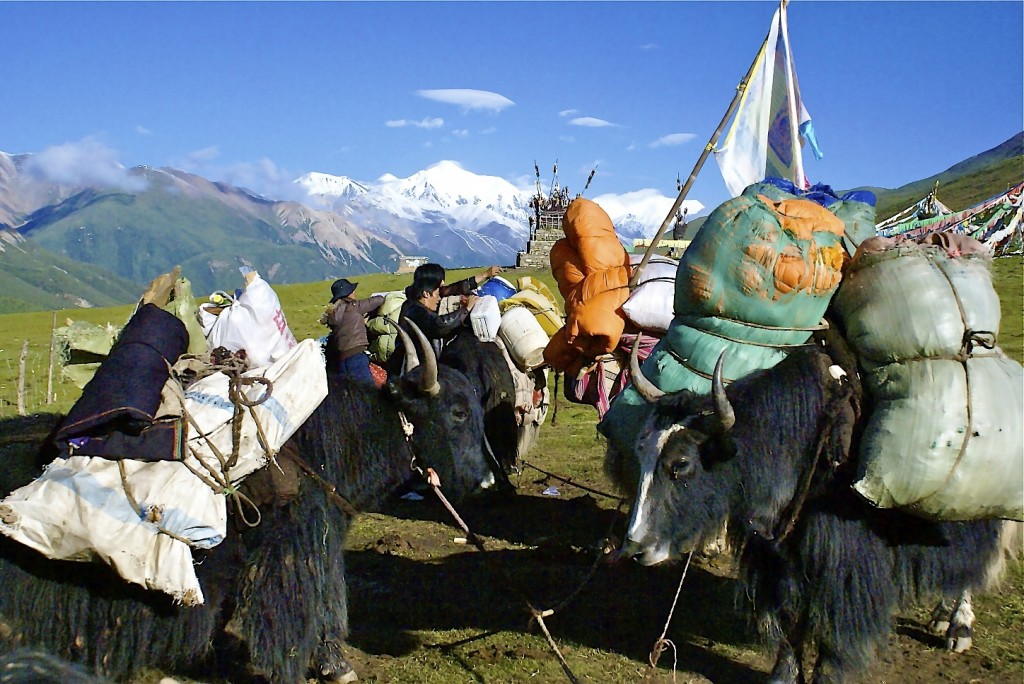
Nomads preparing to move near Mt. Amnye Machen ཨ་མྱིས་རྨ་ཆེན་
The largest lake on the Tibetan Plateau, and in all of China, is Qinghai Lake. Qinghai Lake, known in Tibetan as Tso Ngonbo མཚོ་སྔོན་པོ་, lies in northern Qinghai at an elevation of 3200 meters. It covers roughly 4400 square kilometers. Half of the lake is in Haibei/Tsochang prefecture, while the other half is in Hainan/Tsolho prefecture. The lake is a stunning turquoise color and during the fall and winter, snow-capped peaks form the background of the lake. During the summer season, the lake is a very popular spot for Chinese tourists. Other lakes in the Qinghai part of Amdo include Tso Ngoring མཚོ་སྔོ་རིང་ (Eling Lake in Chinese) and Tso Gyaring མཚོ་སྐྱ་རིང་ (Zhaling Lake). These two lakes are both found in Madoi county in Golog prefecture and are major contributors to the Yellow River. Though very remote and difficult to reach, these lakes are amazingly beautiful and offer stunning views of the nearby Kunlun Mountain Range.
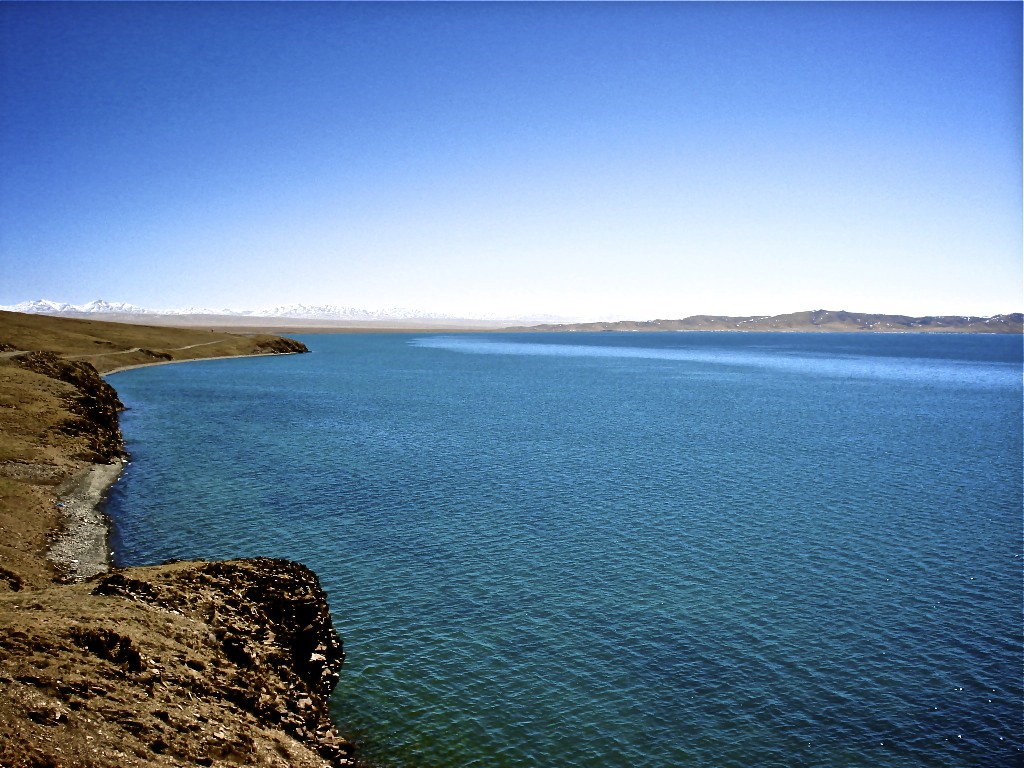
Ngoring Lake མཚོ་སྔོ་རིང་ in Maduo/Madoi county རྨ་སྟོད་ in Golog prefecture
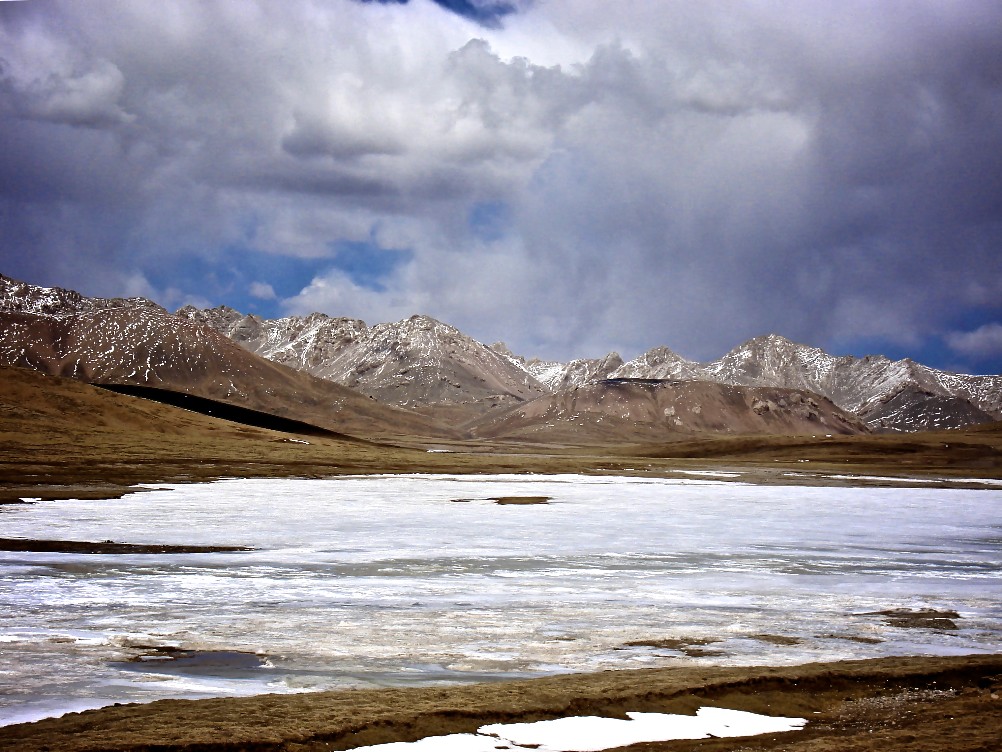
River still frozen in May in Golog prefecture
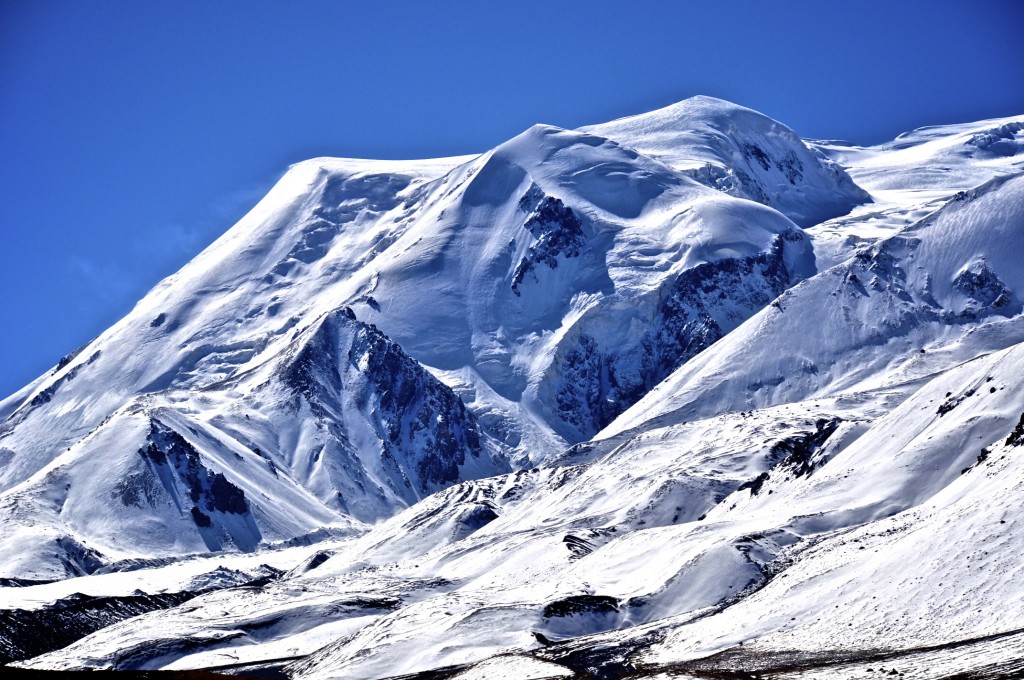
Mt. Amnye Machen in Golog prefecture
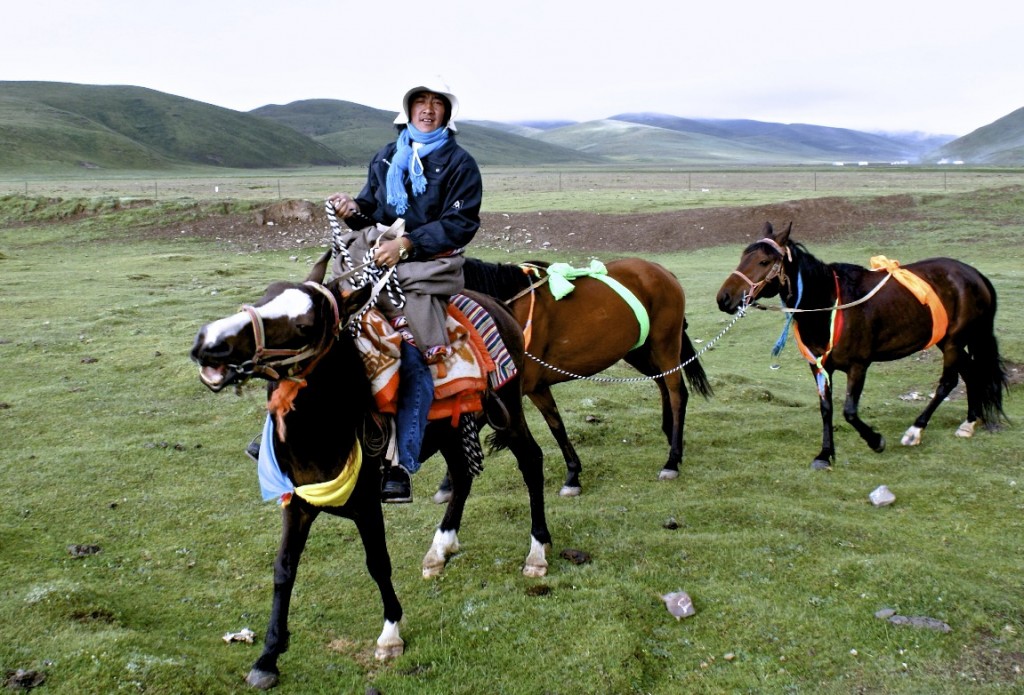
Nomad man on horseback in Dari/Darlag county དར་ལག་ in Golog
Winters across most of Amdo are very cold and last a long time. The coldest regions are Golog prefecture (especially Madoi county) and areas above 3500 meters north and south of Qinghai Lake as well as the nomad grasslands around Tsekog county in Huangnan/Malho prefecture. In areas above 3500 meters, lows often reach -25C and lows of -30C or colder are not uncommon. Summers can still bring cool nightly temperatures, but day time temperatures are quite pleasant ranging between 18 and 23C.
The Qinghai part of Amdo is, for the most part, an open area of the Tibetan Plateau. No organized tour is required. There are however, some areas that are permanently closed to foreign travelers. Delingha county in Haixi prefecture (northwest Qinghai) is completely closed to foreigners. If you somehow make it here, the police will quickly find you and escort you out. Other counties in Haixi prefecture also appear to be closed to foreigners (I say appear to be closed because the government hasn’t said anything officially, but when foreigners go there, they are usually asked to leave) including Tianjun and Wulan counties. If you plan to go north from Golmud to either Xinjiang or Gansu provinces, the police often require foreigners to purchase an Alien Travel Permit for around 50 RMB per person. You can ask the unfriendly people at the Public Security Bureau in Golmud for more details.
Another area in the Qinghai part of Amdo that has some travel regulations is Golog prefecture. Madoi and Machen counties are completely open, but the other 4 counties of the prefecture (Jiuzhi/Jigdril, Gande/Gabde, Banma/Pema and Dari/Darlag) usually require an Alien Travel Permit. This permit can be purchased at the Public Security Bureau in the prefecture capital of Dawu in Machen county for around 50 RMB per person.
Lastly, the 2 northern counties in Haibei/Tsochang prefecture (north of Qinghai Lake) are also closed to foreign travelers. These counties are Qilian and Menyuan. Getting caught in these counties could result in a fine and definitely will result in you being asked to immediately leave by local police.
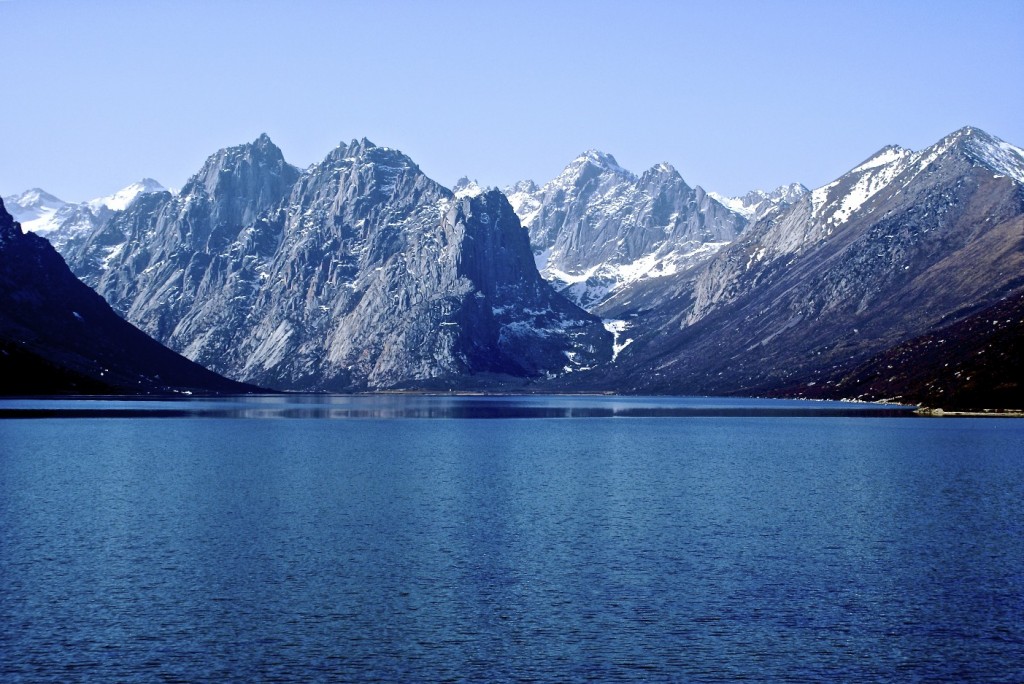
Mt. Nyenbo Yurtse in Jiuzhi/Jigdril county གཅིག་སྒྲིལ་, Golog prefecture
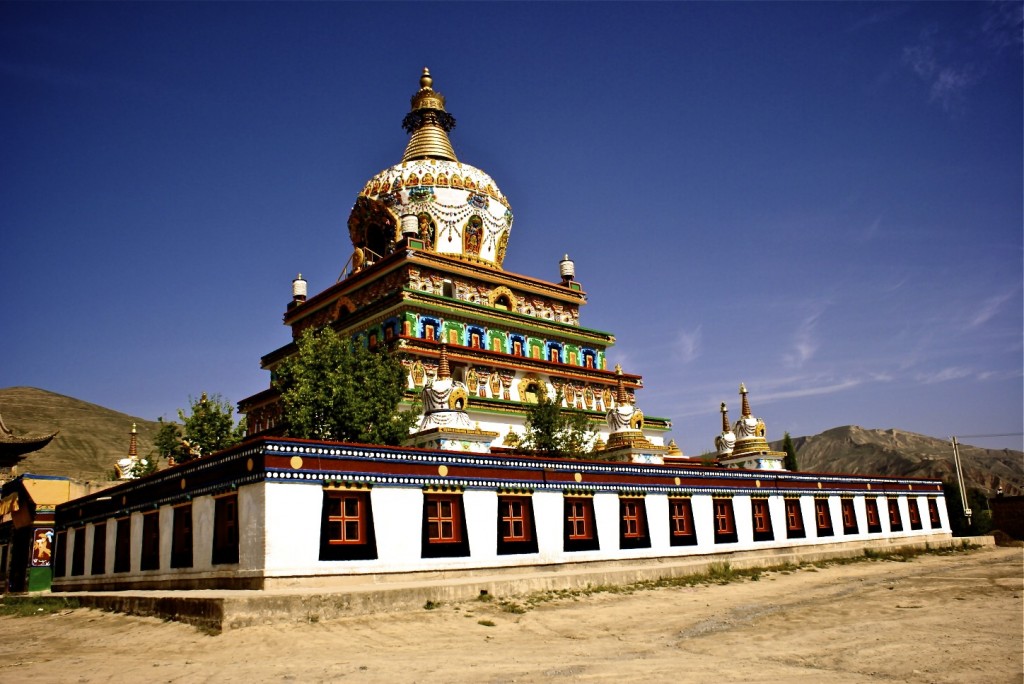
A large stupa in Tongren/Rebkong
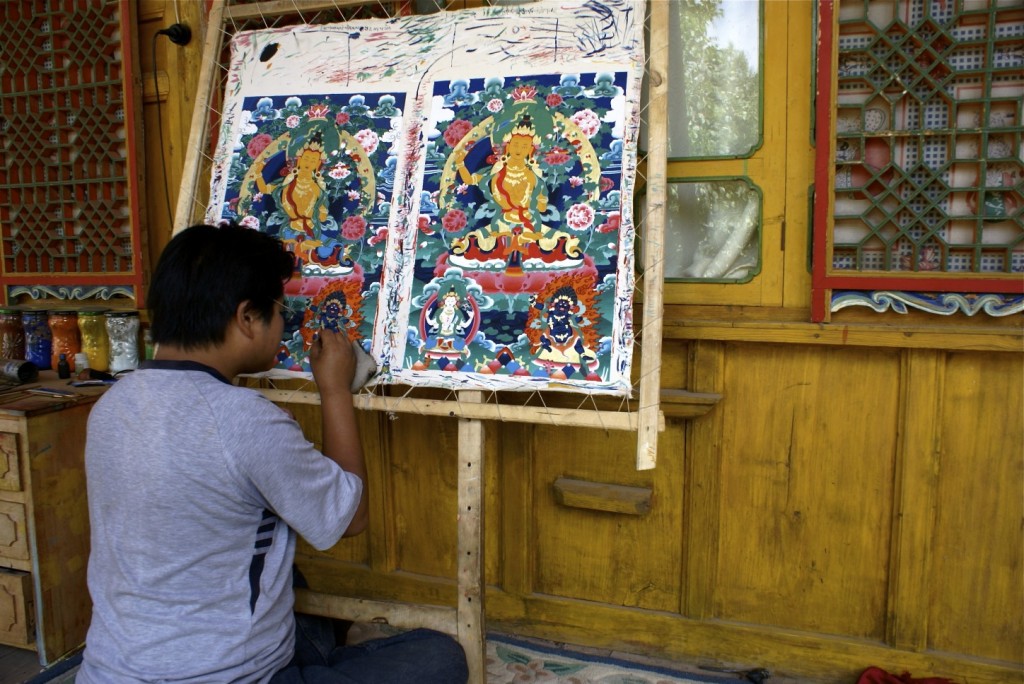
A Thanka painter in Rebkong
Xining is the starting point for travel in the Qinghai part of Amdo. Xining is easily reached by rail or air from most large cities in China. There are daily buses from Xining to every county within Qinghai province. Each prefecture has a capital town, which is normally the largest town in the prefecture. The capital town will have daily buses or mini-vans to all of the other counties within the prefecture. It is best to spend a night or two in Xining, elevation 2300 meters, before going to higher elevation areas of the province.
If you have any questions on the Qinghai part of Amdo, send an email to thelandofsnows@gmail.com
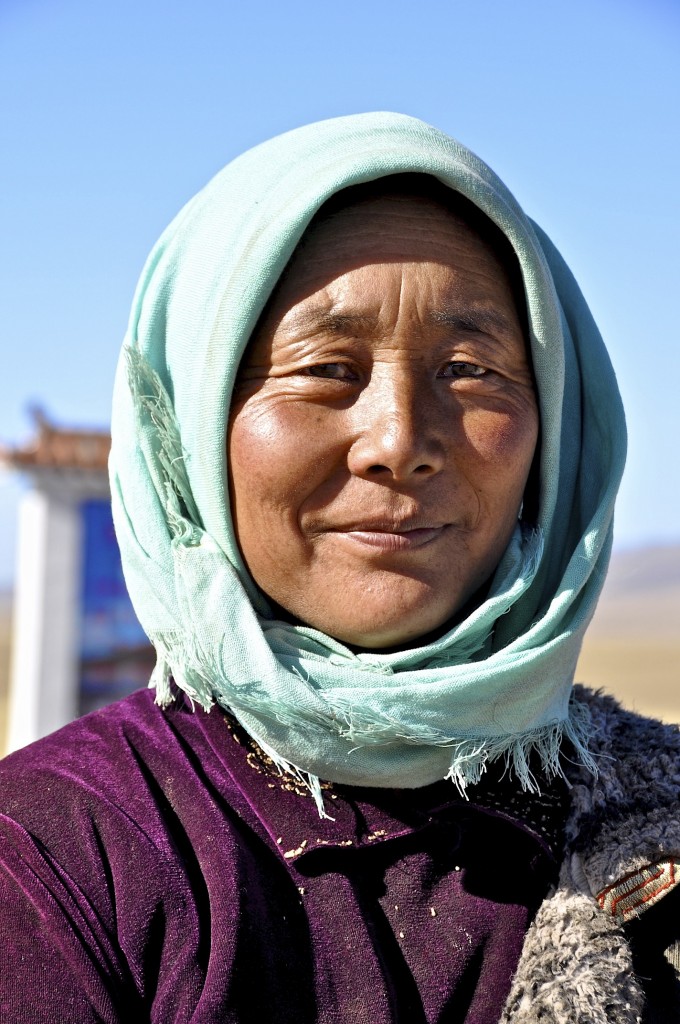
Amdo nomad woman
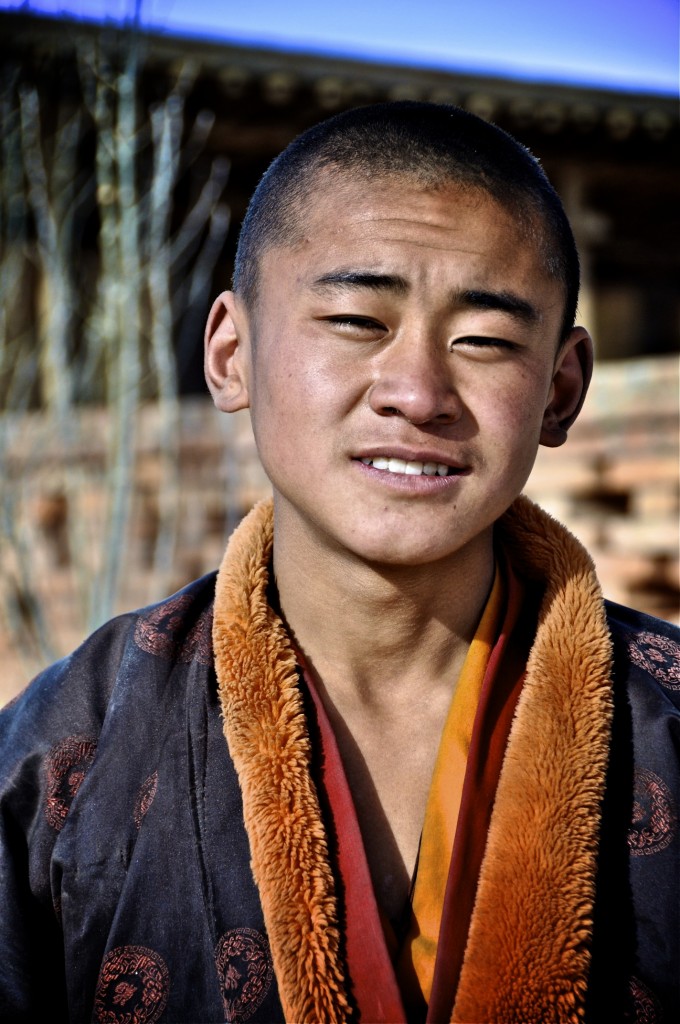
A young monk from near Qinghai Lake
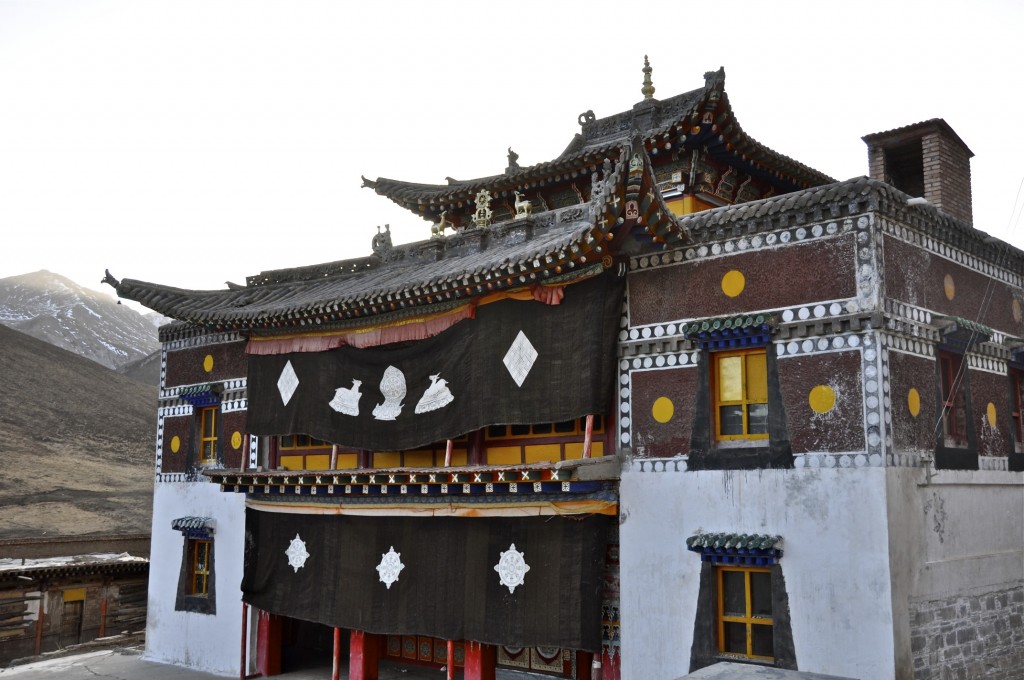
Trakar Tredzong Monastery in Xinghai/Tsigortang county རྩི་གོར་ཐང་
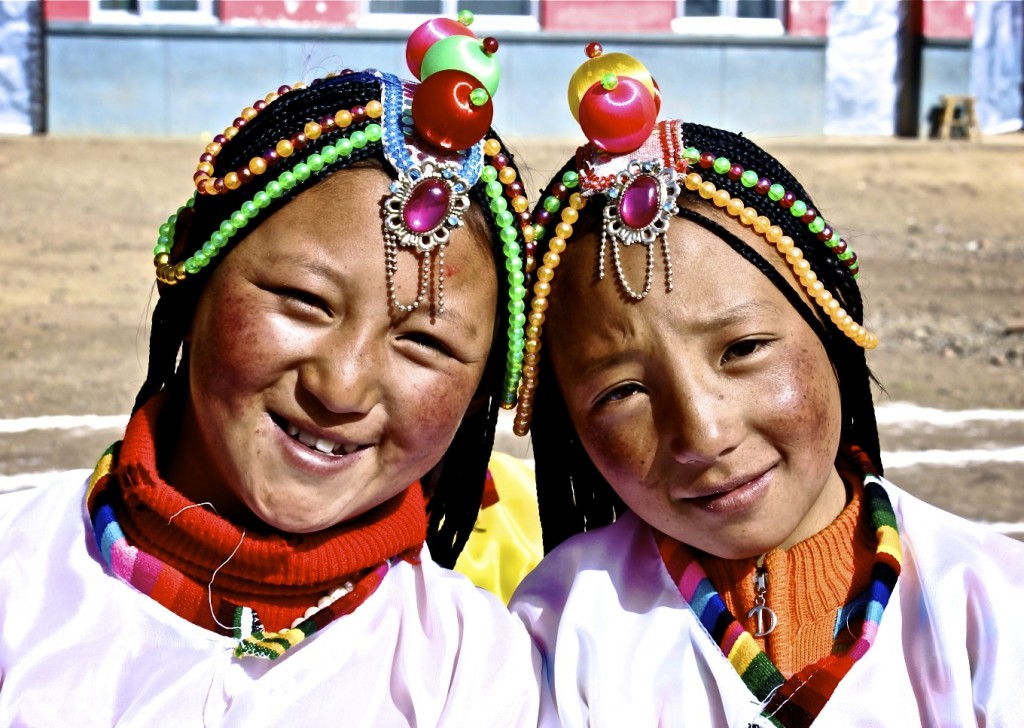
Young Amdo girls during a performance in Golog

Would like to know about the process for visiting Kekexili Nature Preserve in Qinghai.
Any direction you can lead me?
Great overview of the area we love.
wow, amazing photos and I feel like in heaven if I can go to these places in Tibet?
Do you organise a group tour to this places?
Thanks
Lawrence
Pingback: Tibet Train — The Biggest Mistake People Make
Pingback: Why not Amdo and Kham?? « The Land of Snows
Losang thank you so much for all these Informations. I’m in Xining and i’m going to travel through Amdo and Kham until Chengdu.
Thanks for all the information on this website. Helped us a lot preparing our recent bicycle trip in Qinghai. A great trip and highly recommended for those who want to see Tibet on a fully independent trip. Video report on https://www.youtube.com/watch?v=3__lVrWdIng
Be careful of those Tibetans along the southern shore of Qinghai lake. Greedy, rude, violent and ignorant are a few words to describe them. At least that was my experience. You cannot access the lake without going through them, either. Apparently, it all belongs to them, and so they let it deteriorate into a muddy trash-pit with an xxRMB entry price.
Sadly, I have also had some bad experiences with some of the Tibetans along the south shore of Qinghai Lake. However, the vast majority of Tibetans are extremely kind and hospitable.
Losang
Pingback: Update on Amnye Machen « The Land of Snows
Pingback: 2015 Tibet Travel Regulations | The Land of Snows
Pingback: The Train to Tibet | The Land of Snows
Hello Lobsang,
I really enjoy reading your website and the information that I can get, which I haven’t see anywhere else. Seems Amdo region of Qinghai is not such famous, much more isolated than the “classical” Lhasa and Everest area, and actually that’s what attracts us to go there for a trip.
We want to make a few days trekking this August’2016 in the area. We are still not sure where to go- but probably will choose between Kekexili and Amnye Machen- all starting from Yushu.
About Amnye Machen, I thank you for the useful information that I read in “9. Pingback: Update of Amnye Machen”. So now I’d like to ask about Kekexili:
1. Is there any transport from Yushu to Kekexili? As I see on the map, there is a road from Yushu to Qumarleb, but how about the section from Qumarleb to Budongquan at the Tibetan railway? Is it still a dirt road with no buses or other transport?
2. The main question: Is Kekexili nature reserve open for travelers, especially foreigners? If yes, does it require a permit to enter? And can we just walk few days inside Kekexili, walking only on foot, and sleeping in tents?
3. Can we take some transport after the Kekexili trekking (if such is possible), to go to Golmud, and from which point?
4. Can we drink the natural water of the area- from rivers, lakes or other sources?
Thank you and looking to enjoy every kind of information, that may be useful for everyone. 🙂
Hi…Kekexili is not located in Amdo, but in Kham. This rough, wilderness region is only for the highly experienced trekker/climber. Kekexili is very unforgiving as it is a barren, freezing, high altitude desert that is one of the world’s largest uninhabited regions. If you are not fully qualified for this potentially dangerous region, I recommend going to a different region of Qinghai that is less extreme. I have sent further info to you by email. Be smart. Be safe.
Lobsang
Hello !
I will be in dunhuang this november and would like to know if it is possible to go south to Qinghai lake via chaka ?
In the article you mention restriction in Delinghua, but is it possible to go throug visout any stop there ?
Hello Lobsang,
We just back from two trips in Tibet this August. It was a great trip, and I’d like to share a little about our experience there. The route of the first trip was Xining – Langmusi – Zoige – Jiuzhaigou – Tanggor – Nyenbo Yurtse – Golog – Amnye Machen – Qinghai lake – Xining.
The section around Gannan and North Sichuan was as usual crowded with tourists. We were some of the last visitors to see the beauty of Jiuzhaigou, after we left, same day evening the earthquake happened there, but we were already in Tanggor, so we couldn’t feel it.
Particularty about Qinghai part: Nyenbo Yurtse is very beautiful, but more and more commercially tourist place, the gate ticket was 120 RMB, and they didn’t allow us to sleep in a camping at lake shore.
Then we traveled to Golog, passing through Banma, Darlag and Gande. There wasn’t any police and any check point on the whole road, so there was no problem for me as a foreigner without a travel permit. But a large section of this road is under construction, full of dust, hope next year it will be better.
Finally we passed on the highway on the north side of Amnye Machen. The highway is perfect, still free for use (without toll gates), and only the two tunnels are still closed, which was better, because we could go to the old dirt road which passes Drakde La pass and the Damxung glacier- again free. This time we didn’t see any construction work, everything was empty, no people, no workers, although the construction work is still unfinished. So seems NOW, in summer 2017, is the best time to visit Amnye Machen’s north side, maybe next year it will be not free anymore, and maybe if we drive on the highway, will not be able to go offroad on the old dirt road.
Greetings!
Krasen, can you please elaborate on what happened at Nyenbo Yurtse? I had planned to camp there in about a months time. Is camping banned outright? Cheers.
Hi Carl,
No, you can camp inside the Nyenbo Yurtse park, but just not directly on the lake shores, only beside the parking lot, and pay 30 RMB for that. It is again very near to the lake (about 200-300m behind a small hill), just you can’t see the lake from the tent and enjoy it from there. They said it is because recently the tourists leave a lot of garbage on the shores and they try to stop it.
Or you can sleep in the Mongol tents beside the parking, for 100RMB for a bed.
Ok thanks Krasen.
Hey Krasen I just got back from a 3 day (solo intended) hike of Nianbaoyuze. I made it to south side of the lower main lake on day one and had no problems camping there just 15 metres from the lake shore. I even managed a quick dip in the water whilst nobody was around. A couple of local nomads approached those of us who had pitched tents at dusk and asked us for a 20 kuai fee for staying there.
I did notice some rubbish around and four Chinese guys who arrived just before dark were literally hurling their trash into a small pile of garbage in the morning in the fenced area we were camping in. Pretty piss poor really considering I amassed one sandwich sized ziplock bag of rubbish over a full three days- not hard to hike out.
There were a lot of organised horse riding groups coming to that south side of the lower lake in the afternoon. I would have seen 5 separate groups. Day two, myself and a Chinese hiker headed east towards the 4500m pass and Rigan Cuo and did not come across any tourists at all. We ended up camping on the upper west side of Rigan Cuo, again just near a nomad camp and paying 20 kuai each. Hiking the west side I think was a bad choice though as the tracks were terrible and there was A LOT of bush bashing done.
Just in regards to the Alien Travel Permit, I was not asked for this at all in Goulou/Golog and had many encounters with the police- too many for my liking. I was also lied to by a couple of police officers and my Tibetan driver.
In Huashixia an officier told me there were no guesthouses able to take foreigners there and that there definitely was in Dari. My driver also told me he knew of a guesthouse in Dari. Arrive at Dari @ 5pm and my driver says there are no guesthouses and has called the police and the police are telling (demanding) me to head to Banma. So I had to hire another driver and just as we were leaving a severe electrical/ice storm hit. Of course, my driver was texting, driving on the wrong side of the road and with no headlights on- in snow/hail. We ran into a police checkpoint an hour or so out of Dari and I got pulled into the van to make a registration. Thankfully the cop spoke (surprisingly) good English and was honest- he informed me Banma was closed and my best bet was to head to Jiuzhi. My Tibetan driver dropped me at a guesthouse at midnight that was not licensed to take foreigners, so the next day the Jiuzhi police tracked me down and moved me from the Lotus Hotel to the Ximucuo Hotel- as far as I know, this is the only hotel licenced to house foreigners. These police were very apologetic to me, but seemed very keen to find my driver who dropped me at the Lotus. Thankfully the Ximucuo is very central, right at the junction where the drivers gather and the hotel is actually pretty clean and has hot showers, wifi, cable. The Tibetan cleaning ladies are insanely loud though.
Hello
I havetried to post a comment but not sure it worked. Sorry if i double wrote
I have spent some time in Nangchen area last year, it was incredible. Thanks to Lobsang information on this excellent website.
IF people are interested I can give some information on Nangchen area.
Now I plan to make a bycivle tour next year and was thinking that a tour around Xining could be nice.
I am looking for remote places ,remote villages with smal monasteries. Not big one like labrang.
With some hiking possibilities maybe.
Can anyone telle me if around Xining there is nice things to do. I have heard about Gonloung Yongning, is there other places similar in the surroundings that are accessible by bike ?
Thank you for any help.
And greeting Lobsang.
Hi everybody,
I called the guys in the Nianbaoyuze park and they told me it’s closed to everybody and no trekking is permitted in the whole area. Only small organized tours are allowed, I was proposed a photographic tour of 7-9 days for the cost of 15000 rmb that cross also to Aba prefecture in Sichuan, they told me they can deal with the permit for foreigners. The area of Nianbaoyuze won’t open to public in the near future, they told me they got issues with people littering and polluting.
Any other suggestion for trekking that don’t requires spending many days camping outside and are not too high in altitude (above 4500mt)? That park was the best option for me. Any other area in Qinghai is fine to me if you have any suggestions.
thank you
Hi Elias, did you find a place in the area for your hiking and camping?